Fuji Volcano
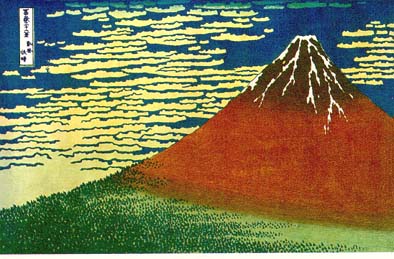
Mt. Fuji illustrated by a famous Ukiyoe painter, Hokusai Katsushika (1760-1849):
one of thirty-six views of Mt. Fuji.
Fuji Volcano is the highest in Japan, rising 3776 m above sea level
in the form of a typical cone about 50 km across the base. At the summit
of the volcano is a circular crater about 500 m across and as much as 250
m deep below the highest point (35o21'N, 138o43'E). The upper half of the
volcano is all in white color in winter, small patches of permanent icy
snow left on the shady slopes in and about the summit crater are usually
seen even in midsummer. But any traces of past glaciation are found nowhere
on the volcano. The reason is nothing but the fact that the volcano is
virtually covered almost everywhere with lava-flows and pyroclastics ejected
by the volcanic eruptions that have occurred since the end of the last
period of the Quaternary Ice Age.
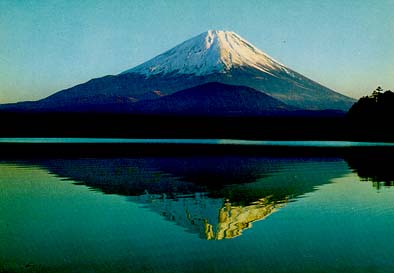
Northwestern view of Mt. Fuji over Lake Shoji which formed by damming the
old lake with the Aokigahara lava flows erupted in 864.
The simple conical outline of Mt. Fuji belies its complex history of growth.
Instead of being a single structure, the volcano is actually a group of
superposed cones. Fuji Volcano consists of three different volcanoes; Komitake,
Ko-Fuji (Older Fuji Volcano) and the present Fuji (Younger Fuji Volcano)
which lie one upon the other. In addition, the volcano is studded with
parasitic cones and flank openings amounting collectively more than one
hundred although most of them are too small to be unsightly excrescences
in the landscape of the host mountain. (Originally written by H. Tsuya)
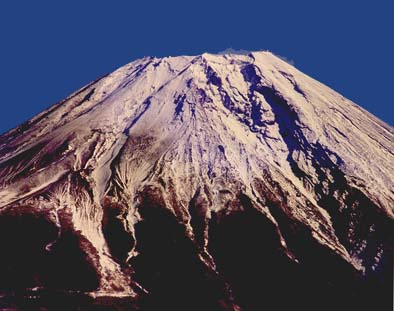
Western view of the top of Mt. Fuji, showing a large gully, Osawa collapse,
developing upto near the top.
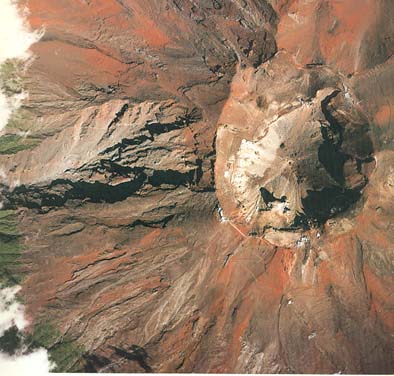
The summit crater of Fuji Volcano. Large gully develops just below the
western rim of the crater (Osawa collapse). No thermal anomaly has been
detected. Courtesy by Geographical Survey Institute, taken in September
1987. This photo appeared in the Bulletin of Volcanological Society of
Japan (Vol. 32, no. 3, 1987) with commentary by Yoshiaki Ida.
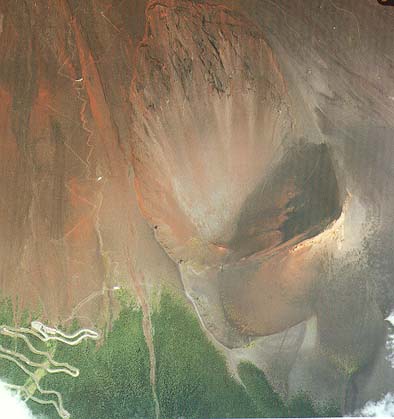
The Hoei crater from which the latest eruption occurred in 1707. Courtesy
by Geographical Survey Institute, taken in September 1987. This photo appeared
in the Bulletin of Volcanological Society of Japan (Vol. 32, no. 3, 1987)
with commentary by Yoshiaki Ida.
See Geology of Fuji Volcano